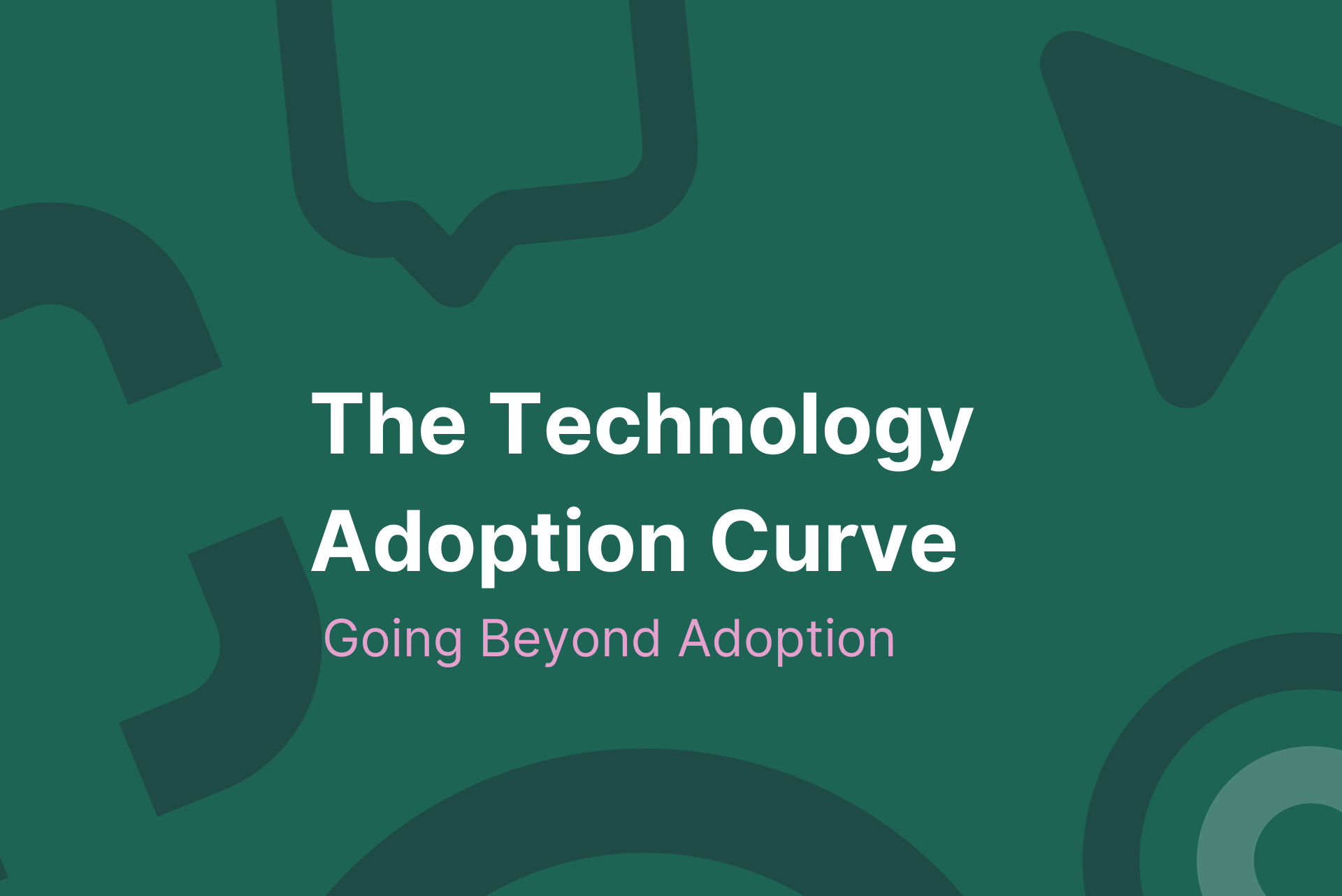Historical origins of the technology adoption lifecycle
The technology adoption curve, as we understand it today, is deeply rooted in the study of how innovations spread within societies and communities. This concept, often visualized as a bell curve, has evolved over the years, but its foundational principles remain consistent.
Everett M. Rogers and the Diffusion of Innovations
Everett M. Rogers’ seminal work, “Diffusion of Innovations” (1962), is commonly dubbed as a cornerstone in understanding the adoption curve. Rogers, a sociologist and communication scholar, delved into why societies rapidly embraced certain innovations, while others lagged or failed. His research led him to categorize adopters into distinct groups based on their propensity to adopt new ideas. These five adopter categories are commonly referred to as the innovators, early adopters, early majority, late majority, and laggards.
Interestingly, Rogers’ initial inspiration came from observing farmers in Iowa and their varying rates of adopting hybrid seed corn. While some farmers were swift to experiment with the new seed variety, others adopted a wait-and-see approach, and a small fraction resisted the change altogether.
The adoption curve and its wider application
Rogers’ foundational principles on the technology adoption process found resonance beyond agricultural innovations. Over time, the technology adoption curve framework has been applied across various domains, from healthcare and education to technology and business. This universal applicability underscores the framework’s significance in understanding how emerging technologies, products, or ideas gain traction.
The influence of other scholars and the evolution of the concept
Rogers’ work laid the groundwork for the technology adoption life cycle, and contributions from other scholars have enriched the adoption curve’s understanding. For instance, Geoffrey A. Moore’s “Crossing the Chasm” (1991) highlighted a significant gap between early adopters and the early majority. Moore emphasized the challenges businesses face in achieving mainstream adoption, a concept that has become pivotal for technology companies and startups.

Psychological factors influencing technology adoption
Understanding the technology adoption curve and its applications is more than just recognizing its stages. At its core, the curve is a reflection of human behavior, influenced by various other psychological factors. These factors play a pivotal role in determining how and when individuals choose to adopt new software, technologies, or ideas.
The role of societal influences
Societal influences play a pivotal role in shaping our decisions, especially when it comes to new technology or idea adoption. The collective beliefs, attitudes, and behaviors of a community or society can either encourage or discourage individuals from trying something new.
In the context of technology adoption, understanding societal influences is crucial because it helps businesses and innovators gauge how a product or service might be received by the larger community. For instance, in the realm of mobile commerce, societal factors such as social influence, convenience, and hedonic motivations have been found to significantly shape users’ perceptions of its usefulness and ease of use.
Personal experiences and past behaviors
Our past experiences and behaviors often serve as a lens through which we view new opportunities and challenges. If an individual had a positive experience with a particular technology in the past, they might be more inclined to adopt similar technologies in the future. Conversely, negative experiences can lead to hesitancy or outright rejection of a new technology.
Understanding this dynamic is essential for businesses as it allows them to tailor their approach, ensuring they address potential concerns stemming from past experiences. For digital entrepreneurs, certain personality traits influenced by past experiences can significantly impact their approach to adopting new technologies.
External pressures and perceived benefits
While internal motivations are essential, external pressures and the perceived benefits of new technology can also heavily influence adoption decisions. These can range from job requirements and company mandates to societal norms and expectations.
For businesses, recognizing and addressing these external factors is vital to ensure successful technology adoption. A study on mobile payment adoption in Austria highlighted the significant role of perceived risk and hedonic performance expectancy, suggesting that the user experience must be enjoyable for consumers to prefer it over traditional payment methods.
Innate personality traits
Every individual possesses a unique set of personality traits that influence their decisions, behaviors, and reactions to new situations. Some people are naturally more open to new ideas and experiences, while others are more cautious or resistant to change.
In the context of technology adoption, understanding these innate personality traits can provide valuable insights into how different population segments might respond to a new product or service. Research has shown that personality traits can play a significant role in decisions related to energy efficiency investments in the residential sector.
For instance, early adopters are more likely to be risk-takers and embrace a new software or tool, while late majority adopters are more cautious and often prefer to wait to see the perceived benefits in action before adopting new, innovative products.

The business implications of the technology adoption curve
The technology adoption curve is more than just a theoretical model; it has profound implications for businesses, especially those in the technology sector. Understanding where a product or technology sits on the adoption curve can significantly impact business strategies, marketing approaches, and even product development. The most common business implications of the technology adoption curve can be categorized as follows:
Strategic planning and product development
The technology adoption curve helps businesses create a roadmap of how their product or technology might be received by the target market. For instance, if a product is still in the early adopter phase, businesses might focus on refining the product, beta testing, gathering feedback, and making necessary adjustments.
On the other hand, if a product is approaching the late majority phase of the adoption curve concept, the emphasis might shift towards scalability and broader market appeal.
Targeted marketing and communication
Different segments of the adoption curve have distinct characteristics, motivations, and concerns. Recognizing this allows businesses to tailor their marketing and communication strategies.
For example, marketing to early adopters might emphasize innovation, cutting-edge features, and exclusivity. In contrast, reaching out to the late majority might require highlighting reliability, widespread acceptance, and the practical benefits of the technology. Pay attention to the different learning styles and financial resources of the different target audience segments, too.
Risk management and forecasting
Understanding the adoption curve can also aid in risk management. If a product is not moving from early adopters to the early majority as expected, it might indicate potential challenges or barriers with end user adoption strategies that need addressing. This insight can be invaluable for businesses, allowing them to anticipate challenges and adjust their strategies accordingly.
Resource allocation and investment decisions
The adoption curve can guide businesses in making informed decisions about where to allocate resources. For instance, if a product is in the innovator or early adopter phase, businesses might invest more in research and development. As the product gains traction and moves towards the early and late majority, the focus might shift toward production, distribution, and broader market strategies.
Strategies to leverage the technology adoption curve
The adoption curve is not just a passive observation of market behavior – it’s a tool that businesses can actively leverage to optimize their strategies and achieve better outcomes.
By understanding the nuances of each phase of the curve, businesses can tailor their approaches to resonate with the specific needs and motivations of each adopter group. Some of the top strategies to effectively leverage the adoption curve include the following:
1. Tailored messaging for each segment
Each segment of the adoption curve has distinct characteristics and motivations. Businesses should craft tailored messages that resonate with each group. For instance:
- Innovators: Emphasize novelty, cutting-edge features, and the opportunity to be a trendsetter.
- Early adopters: Highlight the benefits, showcase testimonials, and offer exclusive access or promotions.
- Early majority: Focus on practicality, reliability, and the widespread acceptance of the product or technology.
- Late majority: Address common concerns, offer guarantees, and showcase the product’s established track record.
- Laggards: Emphasize simplicity, support, and the risks of not adopting.
2. Engage opinion leaders and influencers
Early adopters and innovators often serve as opinion leaders within their communities. Engaging with these individuals can create a ripple effect, influencing the broader population to adopt the technology or product. Collaborations, partnerships, or influencer marketing campaigns can be effective strategies in this regard.
3. Offer incentives and promotions
To accelerate adoption, especially in the early stages, businesses can offer incentives, discounts, or promotions. These can motivate potential adopters to try out the product or technology, potentially moving them along the adoption curve faster.
4. Provide robust support and education
One of the barriers to adoption, especially for the late majority and laggards, is the perceived complexity or lack of understanding of the technology. By offering robust support, tutorials, and educational resources, businesses can alleviate these concerns and encourage adoption.
5. Monitor feedback and iterate
Feedback from early adopters can be invaluable. By actively seeking out feedback, businesses can identify potential challenges, make necessary adjustments, and refine their product or technology to better meet the needs of the broader market.
6. Address the chasm
As highlighted by Moore in “Crossing the Chasm” (1991), there’s a significant gap between early adopters and the early majority. Businesses need to recognize this chasm and develop strategies to bridge it, ensuring that their product or technology can successfully transition to mainstream adoption.

Case studies of successful technology adoption
Understanding the adoption curve is one thing, but seeing it in action provides a clearer picture of its significance. Here are a couple of real-world examples of businesses that have successfully navigated the adoption curve:
1. Electric Vehicles (EVs)
The journey of electric vehicles in the market is a classic example of the adoption curve at work. Initially, EVs were a niche product, primarily adopted by tech enthusiasts and those willing to pay premium prices for the novelty and environmental benefits. These early adopters were driven by the desire to be at the forefront of technology and make a positive environmental impact.
As the technology matured and more manufacturers entered the market, the prices started to drop, and the infrastructure (like charging stations) began to expand. This transitioned EVs into the early majority phase, where a broader segment of the population began recognizing their value proposition, not just for environmental reasons but also for long-term cost savings and performance benefits.
Today, with governments around the world offering incentives and setting ambitious targets for EV adoption, they are rapidly moving toward mainstream acceptance.
2. Software updates
Tech giants like Microsoft have mastered the art of navigating the adoption curve, especially with their software products. By offering regular updates, they ensure that new users always have access to the latest features and security enhancements.
This strategy not only attracts innovators and early adopters but also keeps the early and late majority satisfied by addressing their needs for reliability and familiarity. Regular updates also provide a sense of continuous improvement and support, crucial for retaining the late majority and even laggards who might be resistant to change.
3. Streaming services
The rise of streaming services like Netflix, Spotify, and Disney+ offers a compelling study of the adoption curve. Initially, platforms like Netflix were used by a niche audience who saw the potential of on-demand content over traditional cable TV. As internet speeds improved and the platforms expanded their content libraries, the early majority began to see the value proposition.
Today, with the proliferation of original content, exclusive shows, and movies, streaming services have become mainstream, with many households opting for multiple subscriptions. The shift from physical DVDs and CDs to digital streaming has been swift, and these platforms have played a pivotal role in driving this change.
4. Smart home devices
Devices like Amazon Echo and Google Home, which leverage AI to offer voice-controlled assistance, started as novel gadgets for tech enthusiasts. Early adopters were drawn to the convenience of voice commands, smart home integrations, and the futuristic appeal of these devices.
As the technology matured and more use cases emerged – from controlling lights and thermostats to setting reminders and playing music – the early majority began to adopt it. Today, with the expansion of the smart home ecosystem and the integration of these devices into various aspects of daily life, they are rapidly becoming a staple in many households.
Future trends and the evolution of the adoption curve
The technological landscape is ever-evolving, and with it, the dynamics of the adoption curve. Several emerging technologies and trends have the potential to reshape the way we understand and leverage the adoption curve.
1. AI and Machine Learning (ML)
As mentioned earlier, AI and machine learning are transitioning from being niche technologies to becoming integral parts of various industries. Their potential to revolutionize sectors from healthcare to finance means that their adoption rates might accelerate faster than traditional technologies.
2. Augmented Reality (AR) and Virtual Reality (VR)
While AR and VR have been around for a while, their widespread adoption has been somewhat slow. However, as hardware becomes more affordable and use cases expand beyond gaming to fields like education, real estate, and healthcare, there’s an expected surge in their adoption rates.
3. Quantum computing
Quantum computing promises to revolutionize the field of computation by solving problems deemed impossible for classical computers. While still in its infancy, its potential implications for fields like cryptography, medicine, and logistics mean that once it becomes more accessible, its adoption curve could be steep.
4. 5G
The rollout of 5G networks is set to drastically improve internet speeds and connectivity. This will not only enhance the user experience for current technologies but will also pave the way for new innovations, especially in the Internet of Things (IoT) space. As 5G becomes mainstream, we might see a new wave of technologies and devices emerging, each with its own adoption curve.
5. Sustainable technologies
With growing concerns about climate change and environmental degradation, sustainable technologies are gaining traction. Whether it’s renewable energy sources, biodegradable materials, or carbon capture solutions, the adoption of these technologies is not just driven by market dynamics but also by global imperatives.
6. Personalized medicine
The healthcare sector is on the brink of a revolution with the rise of personalized medicine. Leveraging genomics and big data, treatments and medications can be tailored to individual patients. As the benefits of personalized medicine become more evident, its adoption is set to rise, potentially reshaping the healthcare industry.

Beyond the curve: The road ahead for digital adoption
The adoption curve, a reflection of human behavior toward new innovations and technologies, serves as a strategic tool for businesses and innovators alike. From its historical origins rooted in the diffusion of innovations to the psychological factors that influence adoption, understanding the nuances of the curve is paramount.
Real-world case studies, such as the rise of streaming services and the adoption of smart home devices, underscore its practical implications. Emerging technologies like AI, VR, and sustainable solutions are set to reshape the adoption dynamics, emphasizing the curve’s evolving nature.
For businesses, the adoption curve offers more than just insights – it provides a roadmap from early market entry to widespread market adoption. Strategic planning, targeted marketing, risk management, and resource allocation are all influenced by where a product or technology sits on the curve.
For those looking to ensure seamless technology adoption within their organizations, digital adoption platforms support successful digital transformation. As a leading digital adoption platform, ClickLearn can help businesses navigate the complexities of introducing new technologies, ensuring users are well-equipped and confident in leveraging them to their full potential. After all, understanding the adoption curve is just the beginning; the real success lies in effectively navigating it.
Book a demo



Content is loading...
FAQ on technology adoption curve
The adoption curve provides a broader perspective, focusing on the motivations and behaviors of adopters, while the stages offer a segmented breakdown.
Yes – while commonly used for technology, the curve applies to any new idea or product entering the market.
By staying updated with technology trends, analyzing early adopter behaviors, and continuously gathering feedback.
Challenges include crossing the chasm, addressing the diverse needs of different adopter categories, and staying ahead of rapidly evolving technology trends.
